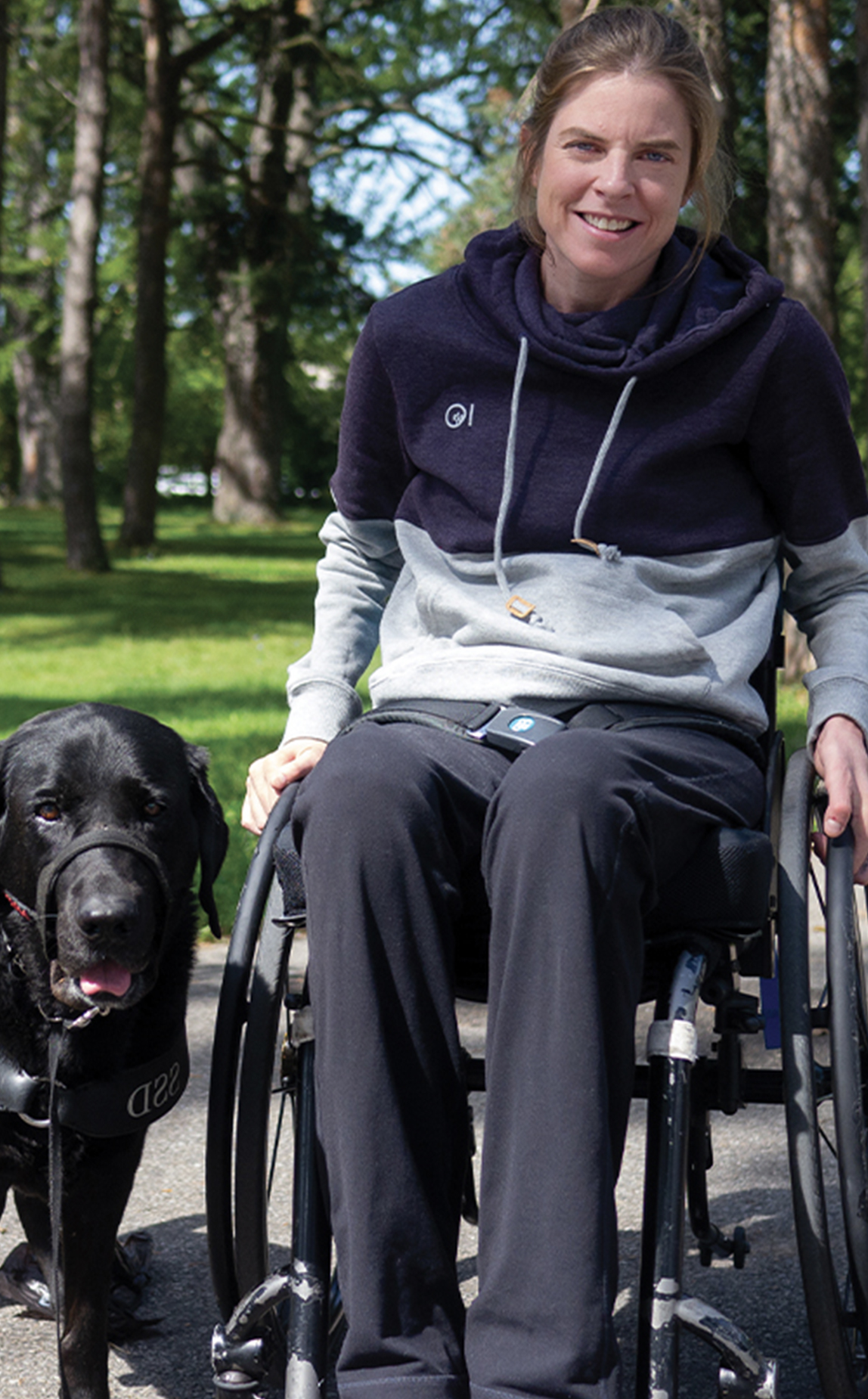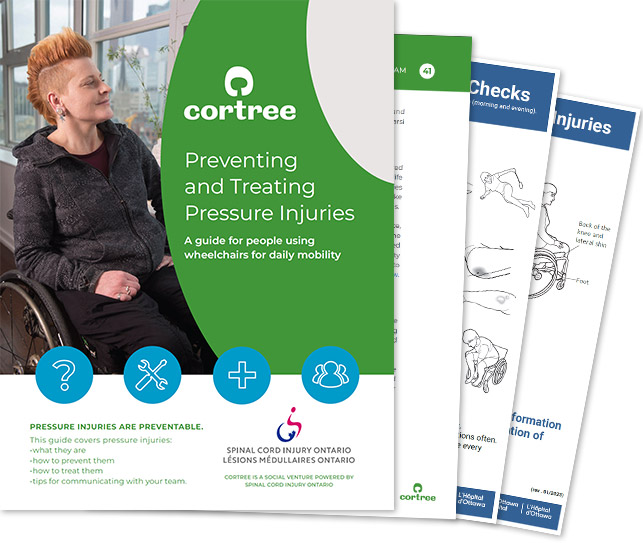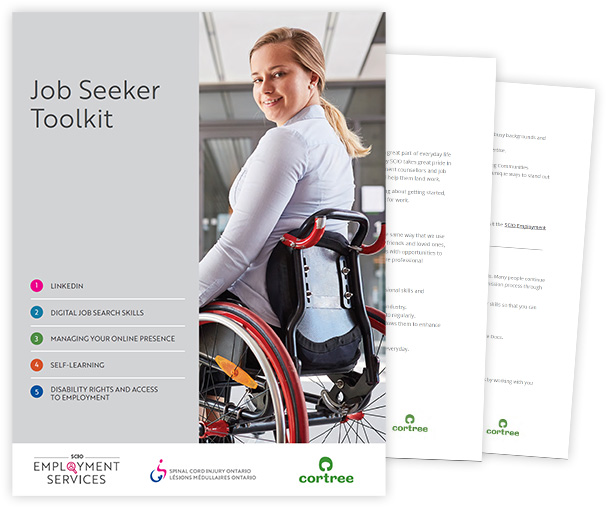Spinal Cord Injury
Cortree Understands the Complexity of Spinal Cord Injuries
This Page Will Cover:
- What is Spinal Cord Injury?
- What are Some Common Causes of Spinal Trauma?
- Is It Possible to Recover from Spinal Cord Injuries?
- Some Helpful Resources
- Cortree Can Help You
Cortree is a social venture owned by Spinal Cord Injury Ontario, which is a registered charity that has been working in our communities for over 75 years. Our experience working with people that have sustained a spinal cord injury, or SCI, gives us a unique perspective into the barriers they face. We’ve put together some helpful information that will allow you to expand your understanding of living with spinal cord injuries.

What is a Spinal Cord Injury?
The spinal cord acts as a message highway between your brain and the rest of your body. It sends messages to the body to complete an action or function and receives messages from the body providing information to the brain to be processed.
When the spinal cord is damaged the nerves cannot send messages between the brain and different parts of the body, resulting in partial or complete loss of ability to move a body part or muscle group. Spinal cord injuries are most often permanent.
There are eight cervical nerves. These nerves control your head, neck, arms, diaphragm and hands.
There are 12 thoracic nerves. These nerves control your chest and trunk muscles.
There are 5 lumbar nerves and these nerves control your hip and leg muscles.
The 5 sacral nerves control your bowel, bladder and sexual function. Loss of bowel or bladder control can occur with severe injury anywhere along the spinal column.
This should not be confused with spinal cord compression, which is a form of SCI. Spinal cord compression occurs when something puts pressure on your spinal cord.
A spinal cord injury, or SCI, occurs when trauma or disease damages the spinal cord and results in partial or complete loss of movement, sensation and loss of function of body organs, like the bowel or bladder.
Spinal cord injuries are classified as either traumatic or non-traumatic.

What are Some Common Causes of Spinal Trauma?
There are a number of situations and factors that can lead to different forms of spinal trauma.
The most likely causes of traumatic SCI are a sudden blow to the spine, spinal cord compression from the force of a car accident, fall or sports injury, or a penetrating injury such as a gunshot wound.
For people with non-traumatic spinal cord injuries, the most likely causes are degenerative spine, surgical or medical complication, tumours, a stroke in the cord, a neurological syndrome, or an infection.
The level or site of the spinal cord injury determines which parts of the body are affected. Generally speaking, the higher the injury, the more body parts will be affected. For example: a cervical or neck-level injury will affect the upper and lower body. This is called quadriplegia or tetraplegia.
However, an injury to the thoracic or mid-level of the spine will affect parts of the trunk and lower body. This is called paraplegia. Lower-level injuries (also known as lumbar and sacral injuries) can also result in paraplegia.
The level of a person’s spinal cord injury also affects the amount of movement and sensation they have below the level of injury and the types of activities they may need assistance with. So, people with higher level injuries may require assistance with personal care, as well as other activities of daily living that require fine motor control. While people with lower level injuries, who often have greater use of their upper body, may require assistance with activities of daily living in the home, such as meal prep or light housekeeping.
Every spinal cord injury is unique and people’s needs change over time. The best way to determine what help someone needs is to ask them.
Spinal cord injuries are also considered either complete or incomplete. The injury is considered complete if the person has no voluntary movement or sensation below the level of injury. In the case of incomplete SCI, the person may have some feeling or movement below the level of injury. This means sometimes one side of the body may have more function than the other.

Is It Possible to Recover from Spinal Cord Injuries?
Thirty years ago almost all spinal cord injuries were complete. But, thanks to new advances in critical and acute care as well as early surgical decompression, these days most people with a new SCI likely have an incomplete injury which means they retain some feeling or movement below the level of injury.
After a person sustains an SCI from trauma or through a health-related issue, the person stays in hospital in acute care for a few weeks. Once they are stable, they usually go to an in-patient rehabilitation centre.
Years ago, people used to stay in the rehabilitation centre for months, allowing for more time to come to terms with living with an SCI. Now the average stay is three months or less, depending on the level of injury and the complexity of need.
The rehab experience is a very intense one. People are both trying to recover from and adapt to their injury – and at the same time, facing a very new reality. This new future can seem overwhelming. But with appropriate rehab and community supports, people with spinal cord injuries can expect to live a long, healthy and fulfilling life.
Some Helpful Resources
1
If you’re interested in referring yourself or a loved one to SCIO, you can find the new client sign up forms here.
2
You can read inspiring stories about our connected and diverse Spinal Cord Injury Ontario community in Community Magazine.
3
If you’re interested in finding some support from another person with a similar disability, SCIO’s Connect could be exactly what you’re looking for.
4
Cortree offers an amazing five-part attendant training course, for those who are looking to work with people that have sustained an SCI. If you sign up today, you can access this course and much more!
Cortree Can Help You
We have a unique level of experience, not just assisting people who have sustained an SCI, but all peoples with disabilities.
Cortree provides a number of helpful educational resources to people with disabilities and their loved ones.
Our goal is to help our communities expand their knowledge of disabilities, so that we can create a more inclusive, accessible world for everyone.
If you or someone you love has a disability, our resources can help you too.

